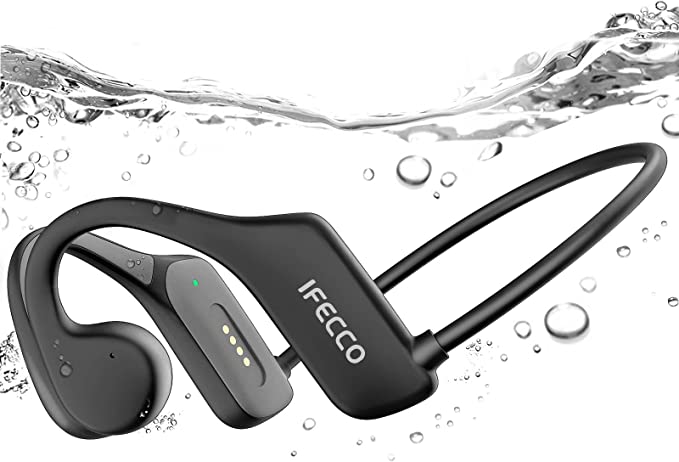The Maker's Silent Hazard: Understanding VOCs from Laser Cutting MDF, Acrylic, and Leather
Update on Oct. 20, 2025, 6:45 a.m.
We often call it the “smell of making.” That sharp, distinct odor when a laser beam vaporizes material—be it the toasty scent of wood or the acrid tang of plastic. We tolerate it as a byproduct of creation. But it’s time we had a serious talk. That smell isn’t just a smell. It’s an airborne chemical bulletin, and we need to learn how to read it.
Understanding what you’re putting into your laser cutter is just as important as the design you’re cutting. The intense heat of a laser doesn’t just cut; it thermally decomposes materials, breaking them down into a cocktail of particles and, more insidiously, gaseous chemicals known as Volatile Organic Compounds (VOCs). This article is your safety briefing. We’re not here to scare you; we’re here to equip you with knowledge, because in the workshop, knowledge is the best personal protective equipment you can have.
Absolute No-Go Zone: Materials You Must NEVER Laser Cut
Before we go further, let’s be crystal clear. Some materials are off-limits. The most critical is Polyvinyl Chloride (PVC), often found in vinyl records, signage, and some faux leathers. Cutting PVC releases hydrogen chloride gas, which turns into hydrochloric acid upon contact with moisture (like in your lungs). It is highly toxic to you and catastrophically corrosive to your machine. Always verify your materials. When in doubt, leave it out.
A Deeper Look at Three Common Workshop Materials
Let’s play chemical detective and examine the hidden chemistry of three materials found in almost every laser workshop.
1. MDF: The Ghost of Formaldehyde
Medium-Density Fiberboard (MDF) is cheap, uniform, and easy to cut. It’s also a composite material, made of wood fibers bound together with a resin, typically urea-formaldehyde. When your laser hits it, you’re not just vaporizing wood; you’re vaporizing this resin.
- The Chemical Culprit: Formaldehyde. This is the primary VOC released. It’s a colorless gas with a strong, pickling odor.
- The Health Profile: Formaldehyde is a well-known irritant to the eyes, nose, and respiratory tract, causing stinging, coughing, and headaches. More seriously, the International Agency for Research on Cancer (IARC), part of the World Health Organization, classifies formaldehyde as a Group 1 carcinogen, meaning there is sufficient evidence that it causes cancer in humans.
- The Key Takeaway: The “wood smell” of cutting MDF is heavily laced with a known carcinogen. The risk is a function of concentration and exposure time, but it’s a risk that must be actively managed.
2. Acrylic (PMMA): The Sharp Scent of Monomers
Acrylic (also known as Plexiglas or by its chemical name, Polymethyl methacrylate - PMMA) gives us those beautiful, clean cuts. It also produces a uniquely sharp and pungent odor.
- The Chemical Culprit: Methyl Methacrylate (MMA) monomer. The laser is essentially breaking the long polymer chains of the acrylic back down into their individual building blocks, or monomers, which then become airborne.
- The Health Profile: MMA is not classified as a carcinogen, but it is a significant irritant. Inhaling it can cause headaches, dizziness, and irritation to the nose and throat. High concentrations can lead to more severe respiratory issues. That “acrylic headache” you might feel after a long cutting session is a direct physiological response to MMA exposure.
- The Key Takeaway: The odor is a direct indicator of exposure to a chemical irritant that your body is telling you to avoid.
3. Leather: The Legacy of Tanning
The rich smell of laser-engraved leather is very popular. But what we’re smelling depends entirely on how that leather was tanned.
- The Chemical Culprit: Chromium compounds and other tanning chemicals. Most commercially available leather is “chrome-tanned.” While the chromium in the leather is stable trivalent chromium (Cr-III), there is a potential risk that the high heat of the laser could oxidize some of it into hexavalent chromium (Cr-VI), a much more toxic and carcinogenic form.
- The Health Profile: Besides the general VOCs from burning organic material, the potential presence of hexavalent chromium is a serious concern for those working with chrome-tanned leather extensively.
- The Key Takeaway: Not all leather is created equal. The source and tanning process are critical safety variables.
Your 3-Tier Active Defense System
Now that we’ve identified the enemy, let’s build a professional-grade defense plan. This isn’t about fear; it’s about control.
Tier 1: Source Control (The Smart Buyer)
The safest chemical is the one that’s never in your workshop in the first place. * For Wood: Whenever possible, opt for solid, untreated wood. If you must use engineered woods, look for products labeled as NAF (No Added Formaldehyde) or ULEF (Ultra-Low Emitting Formaldehyde). They cost more, but they are a direct investment in your health. * For Leather: Choose vegetable-tanned (“veg-tan”) leather. It uses natural tannins from plants and doesn’t carry the chromium risk.
Tier 2: Process Control (The Ventilation Master)
You must remove the fumes from the immediate cutting area. This is non-negotiable. * The Minimum: Venting the fumes directly outdoors through a short, smooth duct is the absolute baseline for safe operation. Ensure your extraction fan is powerful enough to create negative pressure, pulling the fumes away from you. * The Reality: “Outdoors” can be complicated. If you’re in a basement, an apartment, or a shared space, simply dumping untreated chemical fumes outside may not be feasible, responsible, or even permitted.
Tier 3: Endpoint Capture (The Final Interceptor)
This is the final line of defense for any serious maker, especially in indoor or poorly ventilated spaces. After venting what you can, you need to capture what remains. This is where a specialized air purifier comes in.
This is the battleground where the activated carbon filter becomes the star player. As we discussed before, HEPA filters are for particles; they are useless against the gaseous VOCs we’ve identified. The formaldehyde, MMA, and other chemical ghosts will fly right through them.
A purifier designed for this task, like one using an Ultra-Dense Carbon Mesh, provides a massive surface area of activated carbon. It acts like a chemical sponge, adsorbing and trapping those harmful molecules. This is how you address the invisible threat, neutralizing the odors at their chemical source and achieving a truly safer workspace.

Conclusion: Equip Your Passion with Professional Protection
Your talent and creativity deserve a safe environment to flourish. Treating workshop safety not as a chore, but as an integral part of your craft, is the mark of a true professional. By understanding the materials you work with, controlling them at the source, ventilating effectively, and deploying the right tools to capture the rest, you move from being a passive recipient of unknown risks to an informed commander of your own health and safety.










